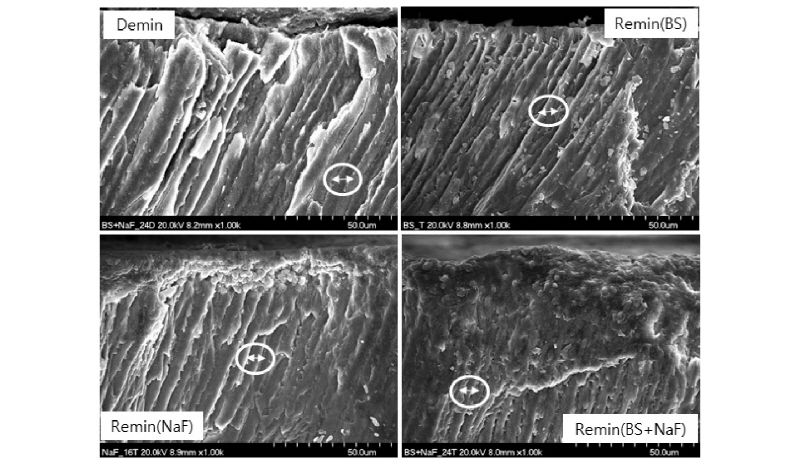Abstract
The aim of this study was to investigate the effects of bamboo salts on remineralization effects on subsurface of artificial carious enamel. Incipient carious enamel was formed in permanent bovine incisors and then specimens were divided into three groups randomly: 3% bamboo salt (BS), 2% (NaF) and the solution of mixed 3% BS and 2% NaF. For remineralization, specimens of each of the three groups were treated for 24 hrs at 37°C incubator. After treatment, specimens were analyzed using SEM and VHN. Statistical analysis used was one-way ANOVA. In SEM observation, the BS group showed narrower distances between enamel rods than the cases of incipient subsurface caries enamel. The NaF and BS+NaF groups showed that the enamel rods near the surface were destructed, and innumerable round small particles were deposited near the surface of enamel. The BS+NaF group showed more minerals attachment between enamel rods than the cases of other groups. The differences in subsurface microhardness (△VHN) increased all of three groups in total by 80 ㎛. The △VHN of the BS+NaF group increased significantly more than NaF and BS groups in depth of 50 ㎛, 80 ㎛. The 3% bamboo salt with 2% NaF solution was found to increase subsurface hardness of incipient caries enamel. Thus, bamboo salt will be used to contribute to prevention on dental caries.
Figures & Tables

The image of demineralized enamel subsurface and remineralization solution treated enamel subsurface (arrows: enamel crystal width)


